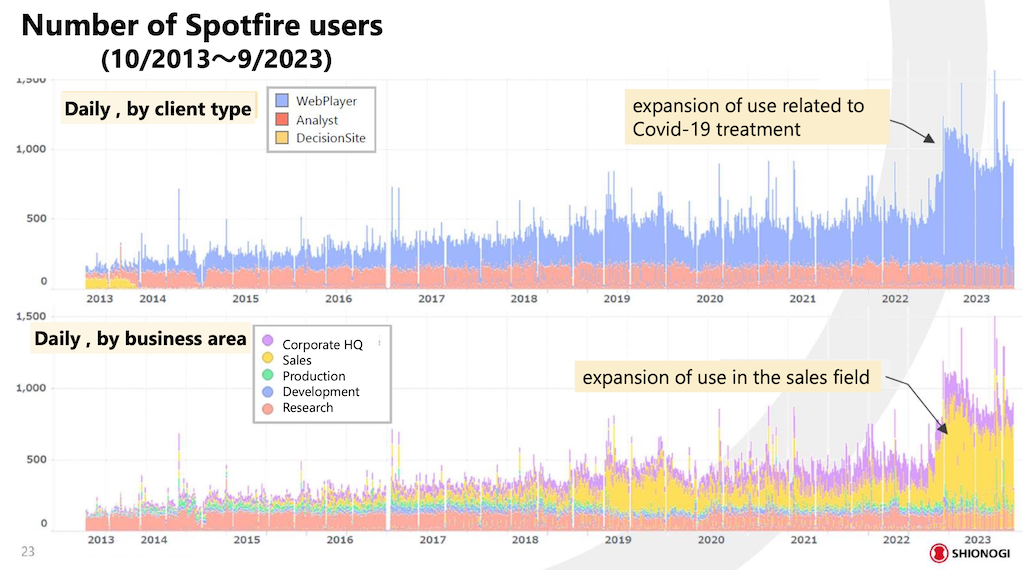Insights from the Spotfire Pharmaceutical Workshop 2024: Shionogi's Journey to Data Integration
I attended the Spotfire Pharmaceutical Workshop 2024 (Korean language only) on July 4, 2024. Among the materials presented by Shionogi, a Japanese pharmaceutical company, there was an especially impressive graph.

This graphs emphasized that everyone at Shionogi has access to this program, and the number of users has increased over time. Particularly, usage among the sales organization surged dramatically with COVID-19. What I found interesting about this graph is that while the data visualization tool Spotfire initially started to meet the needs of the R&D department, the number of R&D users remained almost constant, whereas usage by the sales department and HQ increased significantly. (From my perspective, having spent my entire career in the R&D department, I find it highly significant to observe how the adoption of specific functionalities initially driven by R&D needs eventually becomes established as a company-wide tool.)
Before showing this graph, there was an explanation of the Central Data Management Initiative implemented within Shionogi. This initiative involves storing all data produced, analyzed, and used by various departments such as HR, accounting, sales, R&D, and manufacturing in a central data hub, and managing the associated metadata.
As the importance of AI and data analysis grows, many companies are forming new data departments under the leadership of their CIOs by gathering data scientists. Given that data analysis capabilities can be seen as similar to "being proficient in Excel," it is difficult to predict whether these data departments will continue indefinitely. Eventually, these functions may be absorbed into each department, with the data department focusing on introducing and advancing new technologies. This is because corporate structure changes inevitably follow a cycle of separation and integration.
The real issue to everyone is how to navigate this transitional period. Pharmaceutical companies need to decide whether to embark on a long-term project to integrate and manage all departmental data as Shionogi did, using this as a foundation for each department to develop analytical and predictive capabilities, or to support the development of analytical functions based on each department's needs individually and then integrate them later. The key question is whether it's time to separate or integrate now, and this decision will have a significant impact on the company's competitiveness in the medium to long term.
Although I have only worked in the R&D department and cannot calculate the benefits and costs of integrating company-wide data, I can easily anticipate some qualitative benefits. To grasp the resources being used in many R&D projects, the results of R&D projects need to be combined with HR and accounting data. Understanding how the introduction of a specific product affects HR, whether the success of an R&D project (such as out-licensing events) strengthens relationships between HQ scientists and KOLs in that disease area, and how integrating research and production data impacts production costs and quality issues all require data integration and automated analysis.




Comments